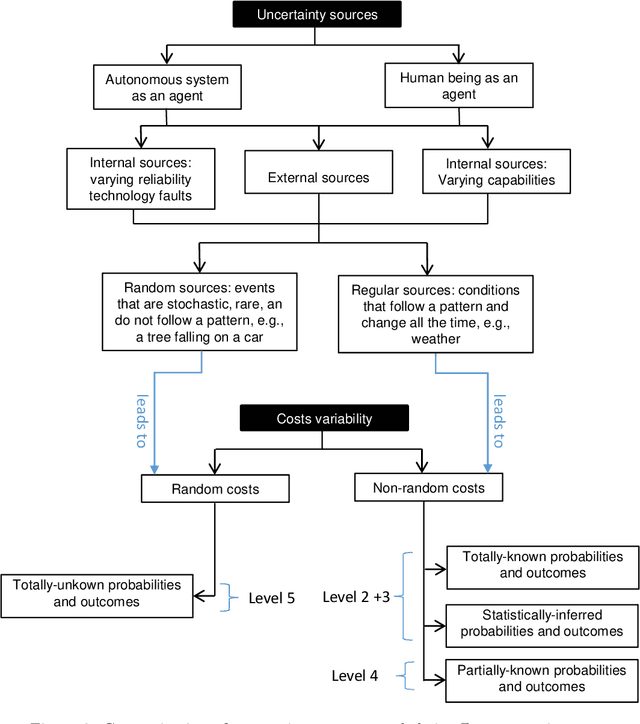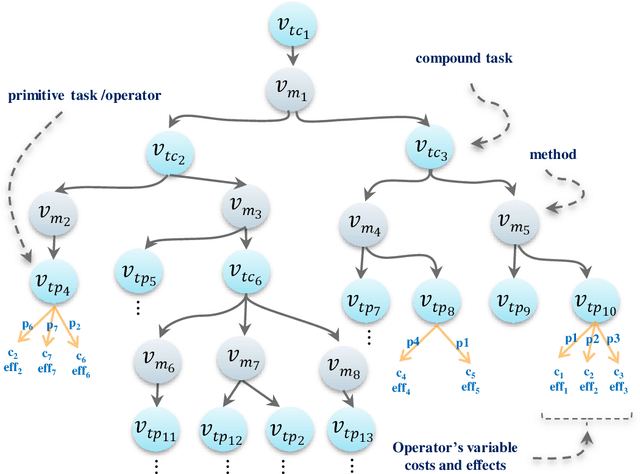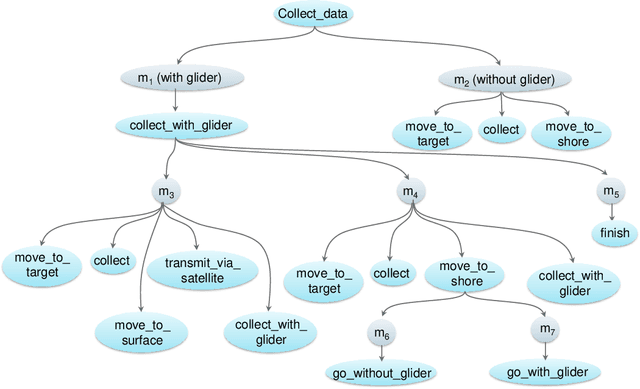Ebaa Alnazer
Understanding Real-World AI Planning Domains: A Conceptual Framework
Jul 10, 2023Abstract:Planning is a pivotal ability of any intelligent system being developed for real-world applications. AI planning is concerned with researching and developing planning systems that automatically compute plans that satisfy some user objective. Identifying and understanding the relevant and realistic aspects that characterise real-world application domains are crucial to the development of AI planning systems. This provides guidance to knowledge engineers and software engineers in the process of designing, identifying, and categorising resources required for the development process. To the best of our knowledge, such support does not exist. We address this research gap by developing a conceptual framework that identifies and categorises the aspects of real-world planning domains in varying levels of granularity. Our framework provides not only a common terminology but also a comprehensive overview of a broad range of planning aspects exemplified using the domain of sustainable buildings as a prominent application domain of AI planning. The framework has the potential to impact the design, development, and applicability of AI planning systems in real-world application domains.
Risk Awareness in HTN Planning
Apr 22, 2022



Abstract:Actual real-world domains are characterised by uncertain situations in which acting and use of resources require embracing risk. Performing actions in such domains always entails costs of consuming some resource, such as time, money, or energy, where the knowledge about these costs can range from totally known to totally unknown and even unknowable probabilities of costs. Think of robotic domains, where actions and their costs are non-deterministic due to uncertain factors like obstacles. Choosing which action to perform considering its cost on the available resource requires taking a stance on risk. Thus, these domains call for not only planning under uncertainty but also planning while embracing risk. Taking Hierarchical Task Network (HTN) planning as a widely used planning technique in real-world applications, one can observe that existing approaches do not account for risk. That is, computing most probable or optimal plans using actions with single-valued costs is only enough to express risk neutrality. In this work, we postulate that HTN planning can become risk aware by considering expected utility theory, a representative concept of decision theory that enables choosing actions considering a probability distribution of their costs and a given risk attitude expressed using a utility function. In particular, we introduce a general framework for HTN planning that allows modelling risk and uncertainty using a probability distribution of action costs upon which we define risk-aware HTN planning as an approach that accounts for the different risk attitudes and allows computing plans that go beyond risk neutrality. In fact, we layout that computing risk-aware plans requires finding plans with the highest expected utility. Finally, we argue that it is possible for HTN planning agents to solve specialised risk-aware HTN planning problems by adapting some existing HTN planning approaches.
 Add to Chrome
Add to Chrome Add to Firefox
Add to Firefox Add to Edge
Add to Edge